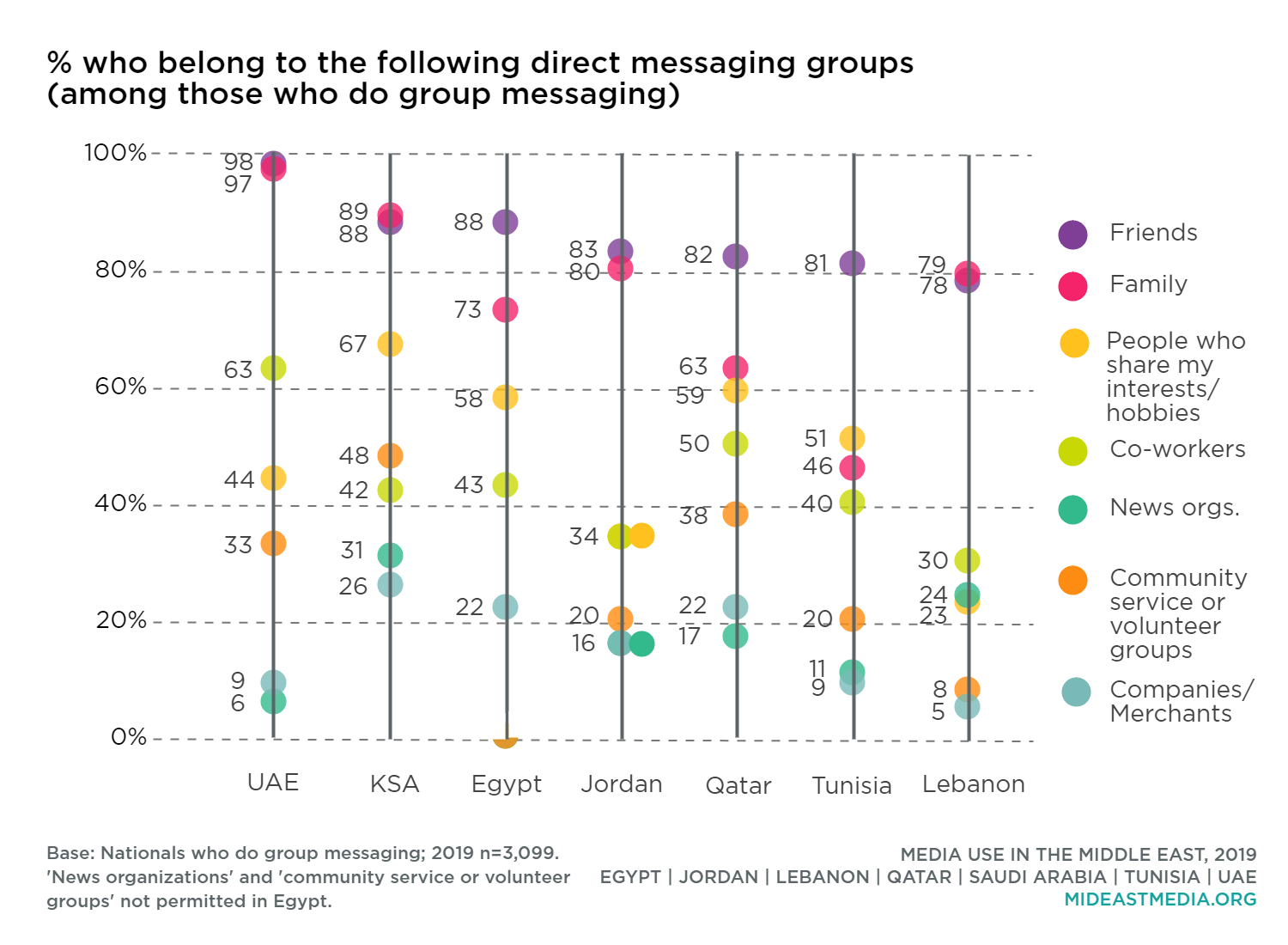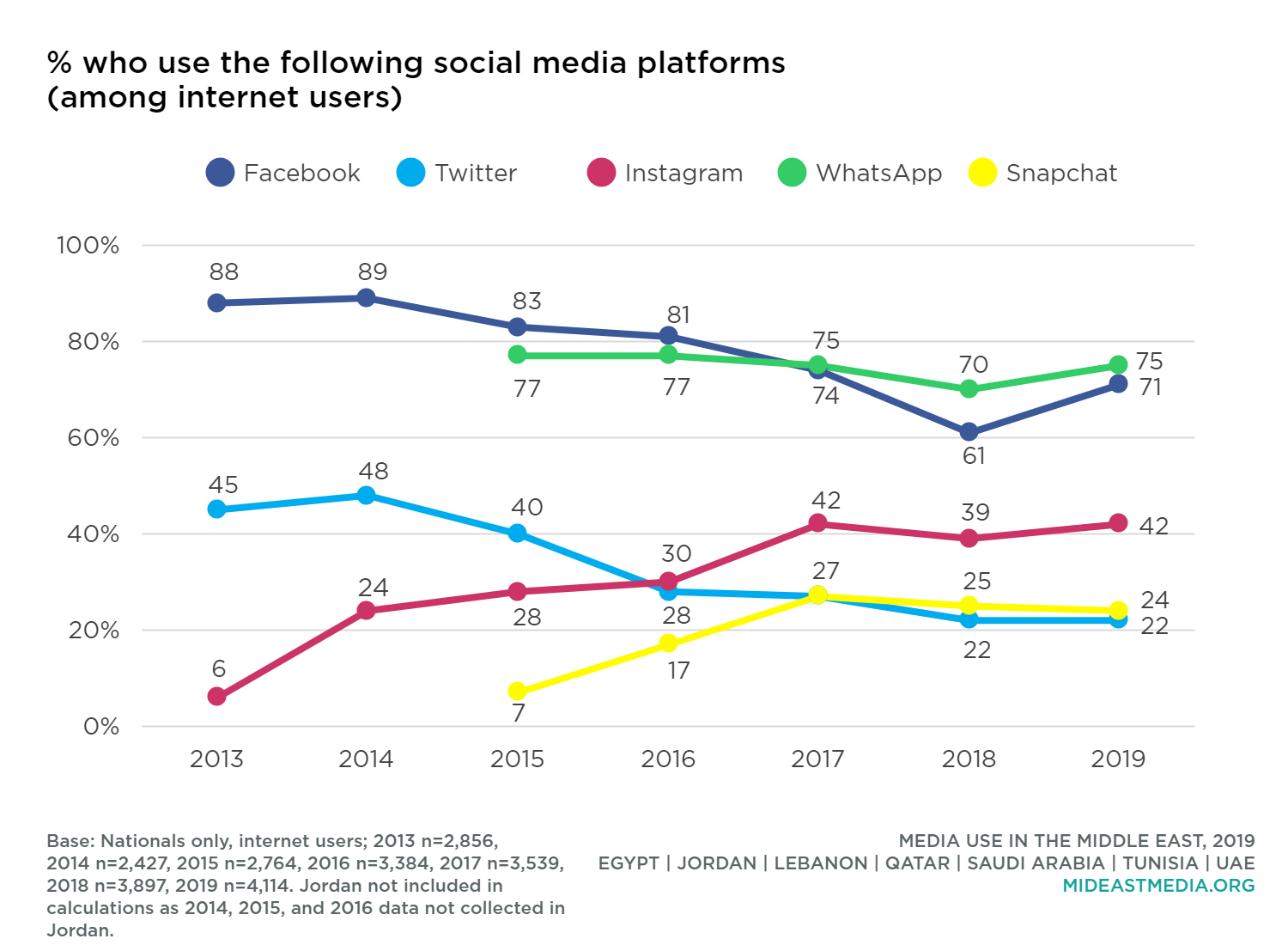
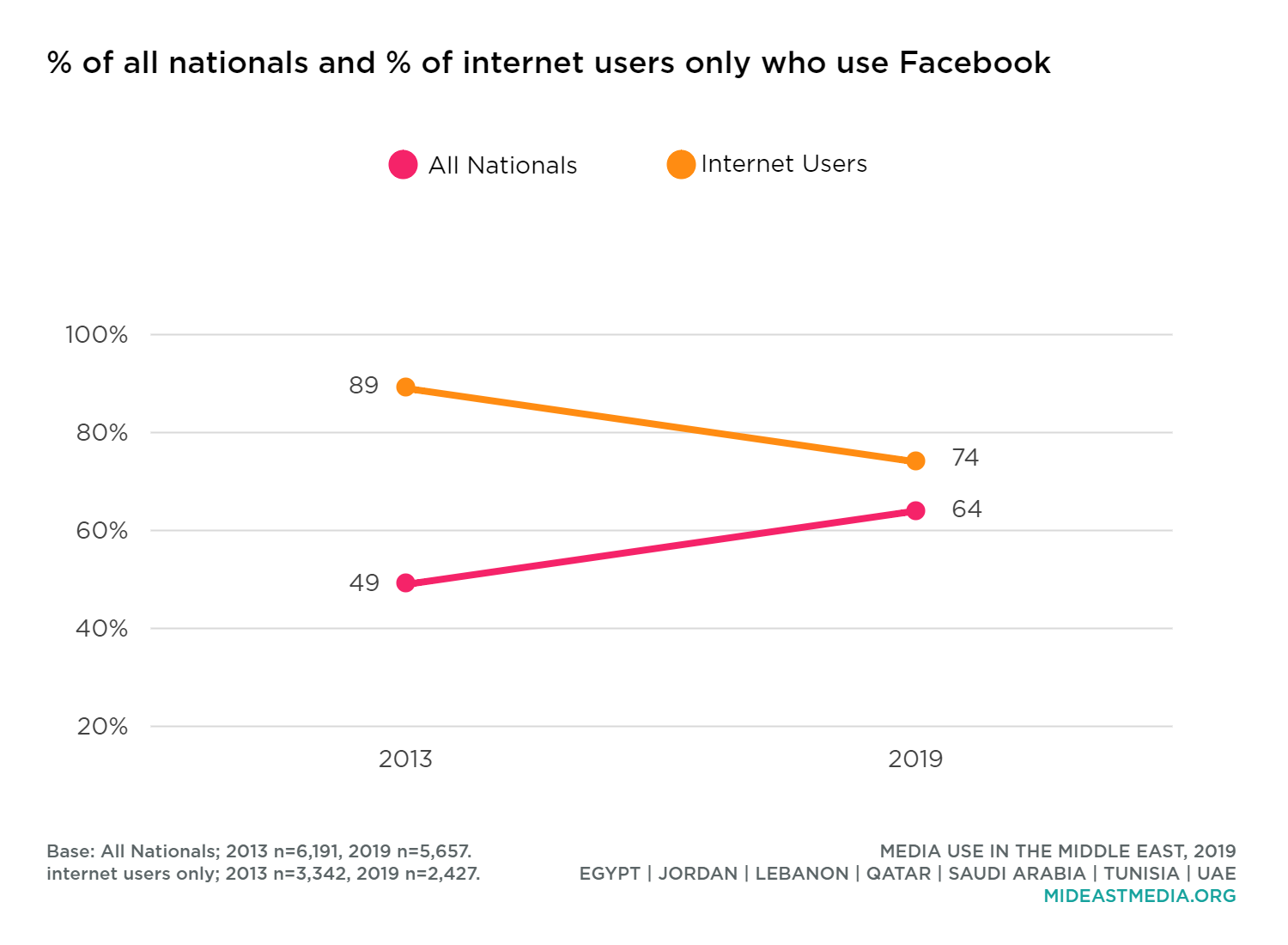
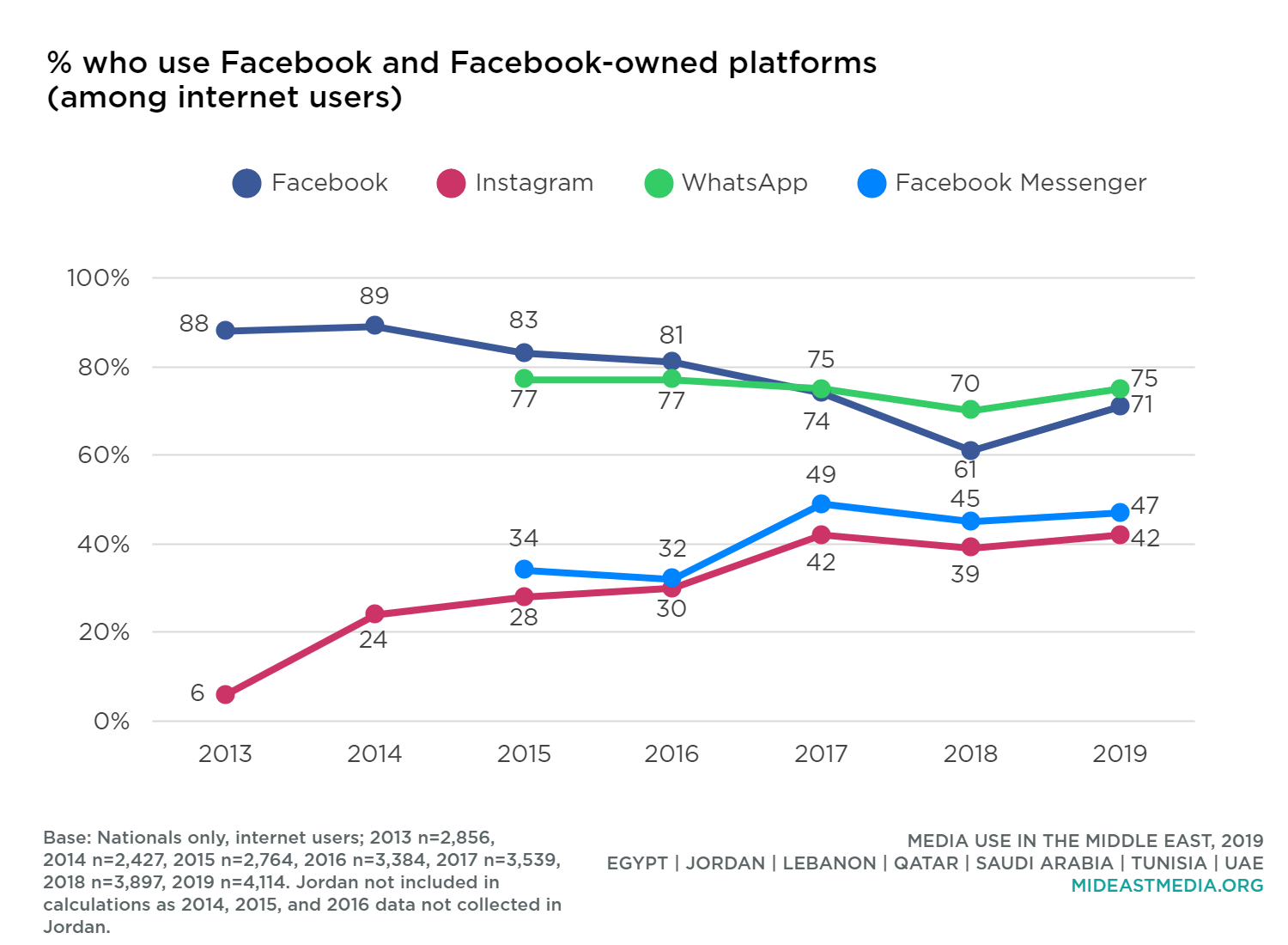
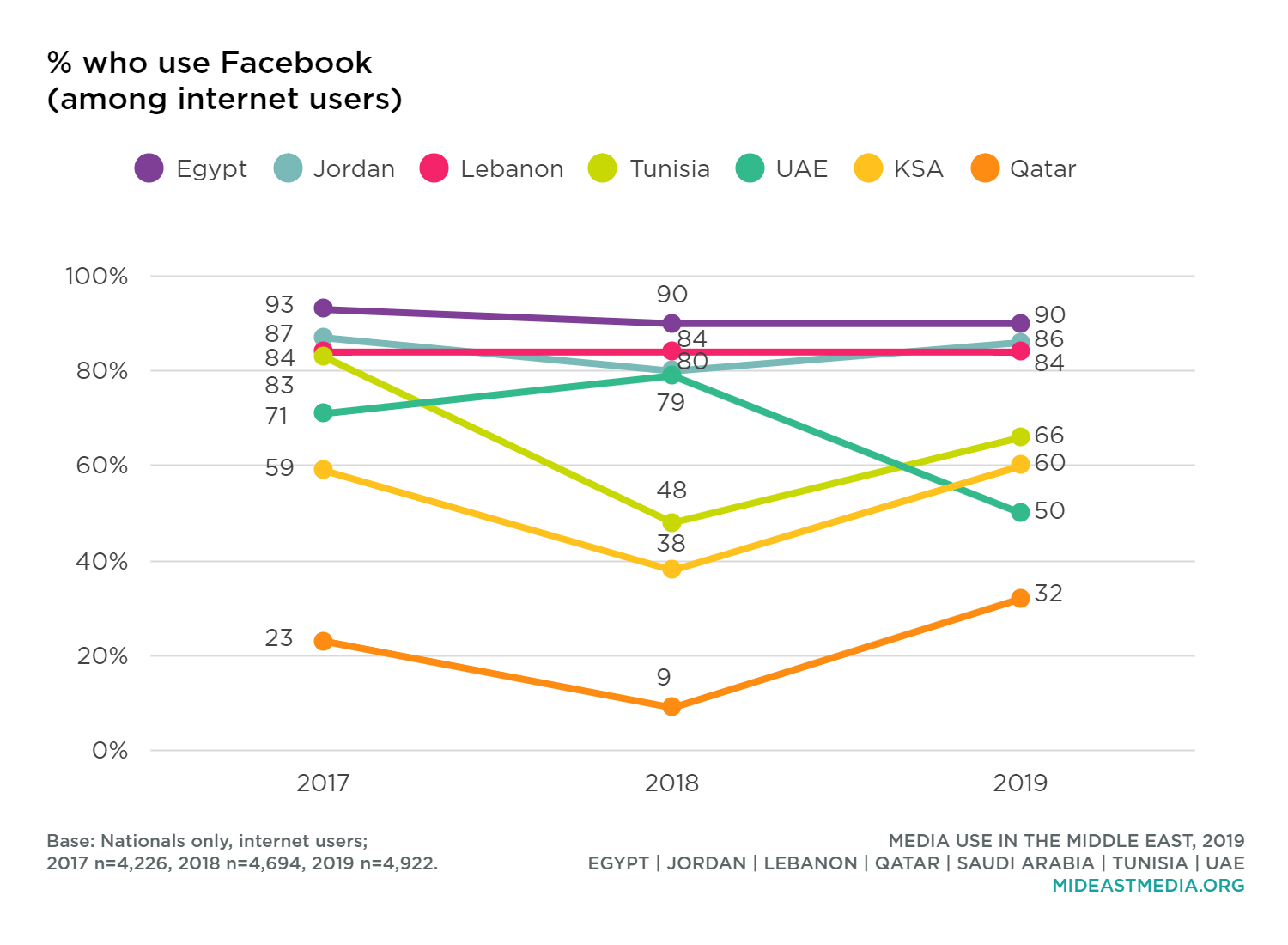
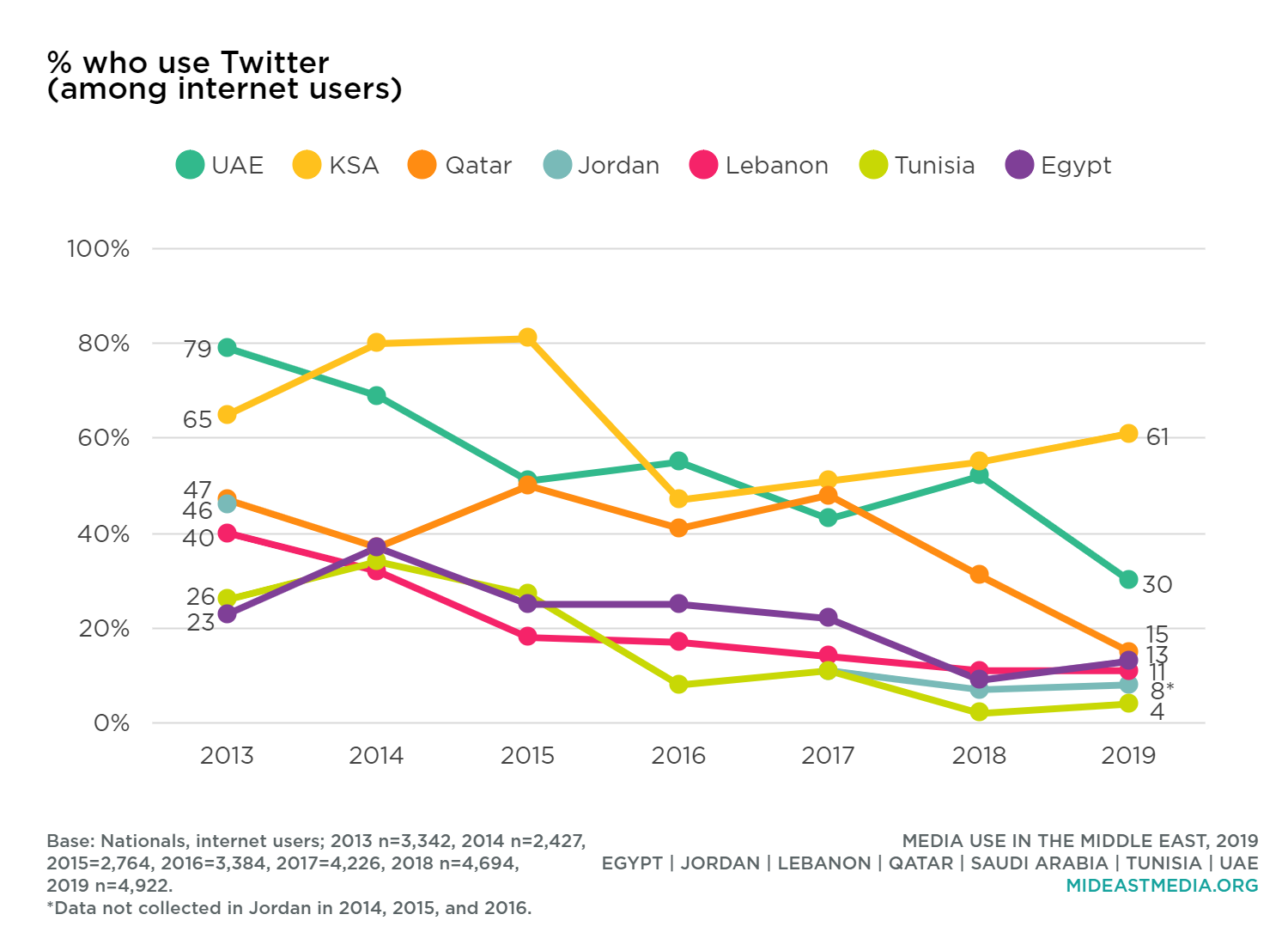
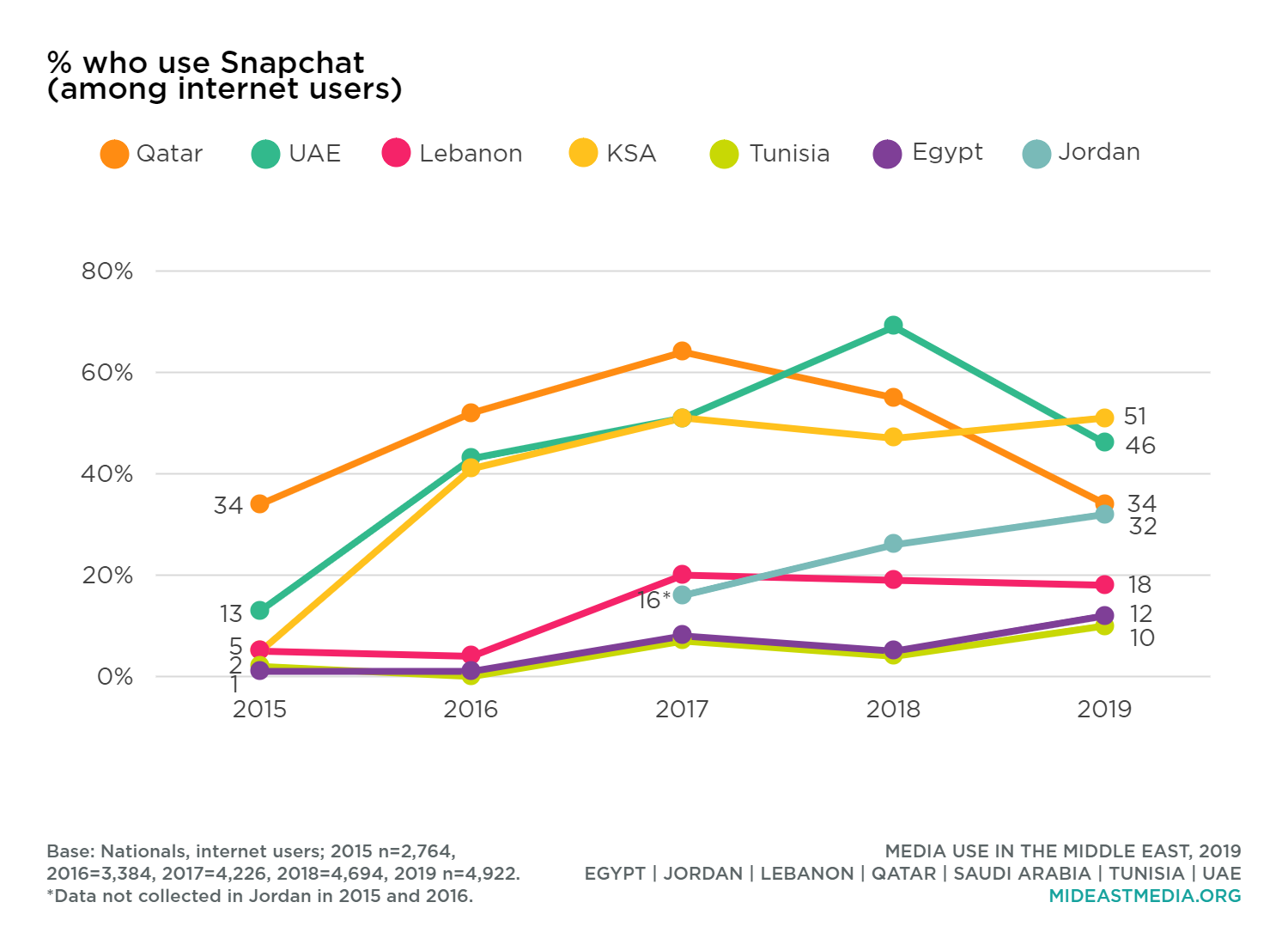
Users of major social media platforms tend to have more followers and friends on Instagram and Facebook than on Twitter and Snapchat, according to respondents’ estimates. Tunisians, Lebanese, and Qataris report the most followers and friends across social media platforms, while Saudis report the fewest.

The number of friends among Facebook users has risen since 2016 in every country, in some countries dramatically (Lebanon: 200 in 2016 to 550 in 2019; Egypt: 100 to 300; Qatar: 100 to 250; UAE: 100 to 245; Tunisia: 332 to 368; KSA: 60 to 80; data not collected in Jordan in 2016).
Men report having more followers and friends on major platforms than do women (Facebook: 441 men vs. 280 women; Instagram: 370 men vs. 300 women; Twitter: 150 men vs. 100 women; Snapchat: 100 men vs. 80 women).
Younger nationals report having more followers and friends on each major platform than those in older age groups (Facebook: 478 18-24 year-olds, 400 25-34 year-olds, 300 35-44 year-olds, 200 45+ year-olds; Instagram: 422 18-24 year-olds, 300 25-34 year-olds, 200 35-44 year-olds, 181 45+ year-olds; Twitter: 135 18-24 year-olds, 200 25-34 year-olds, 100 35-44 year-olds, 70 45+ year-olds; Snapchat: 100 18-24 year-olds; 90 25-34 year-olds, 80 35-44 year-olds, 80 45+ year-olds).
Internet users in Arab countries share a variety of content on social platforms but none more than online videos. Nearly half of internet users report sending, sharing, or posting comments about videos online in the past month, followed by three in 10 who posted about music and news, and about two in 10 posting about each sports, films, and TV programs. Twice as many internet users share about several topics now than did five years ago, including news.
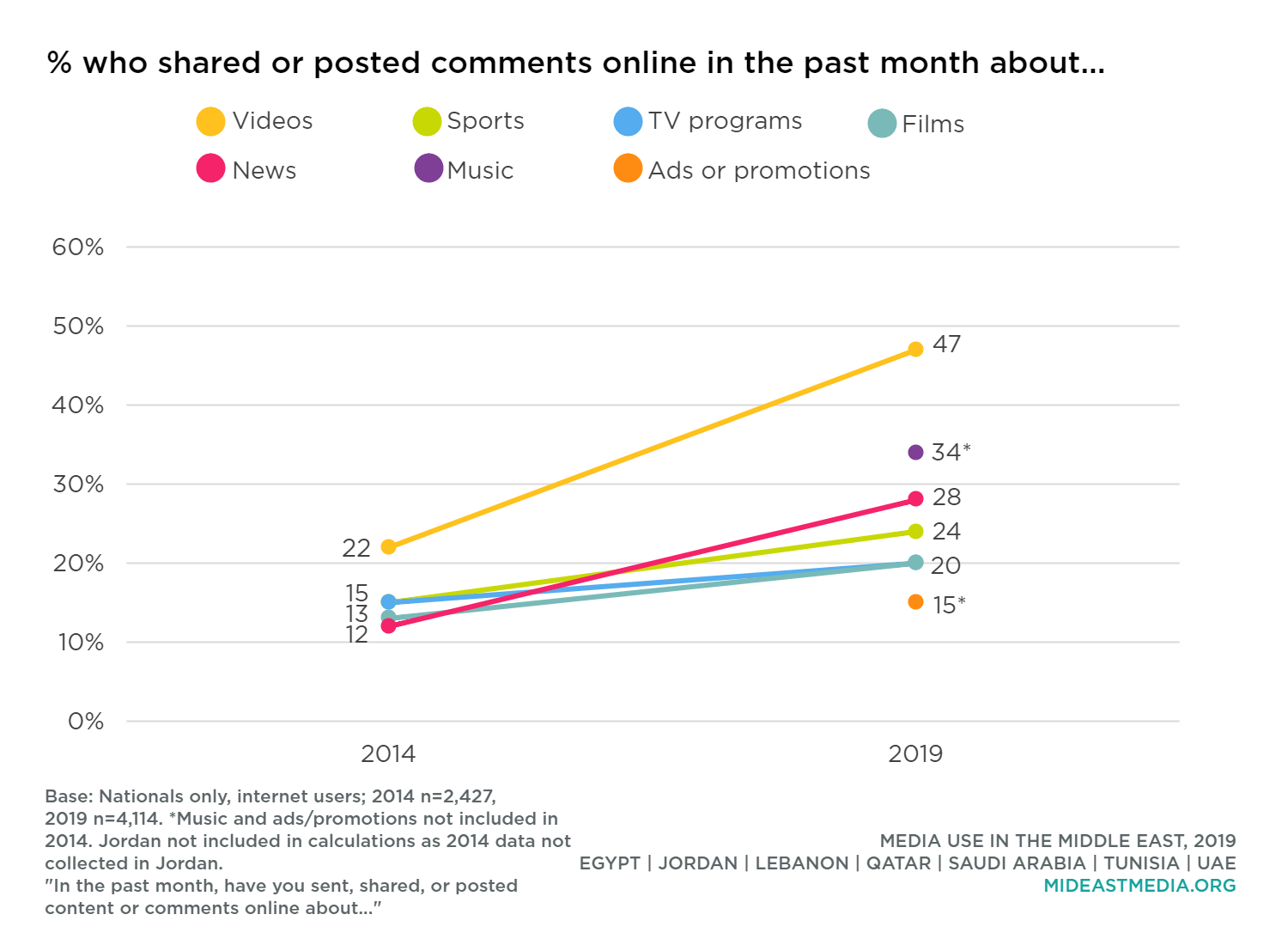
Online photo and video sharing vary widely by country. Half or more Lebanese, Saudis, and Emiratis share personal photos and videos online, while fewer nationals in other countries do the same. Nationals are less likely to share photos and videos they are in. Lebanon is the only country where more than half of nationals share personal images/videos of themselves. Tunisians and Qataris are the least like to share photos and videos of any kind online.
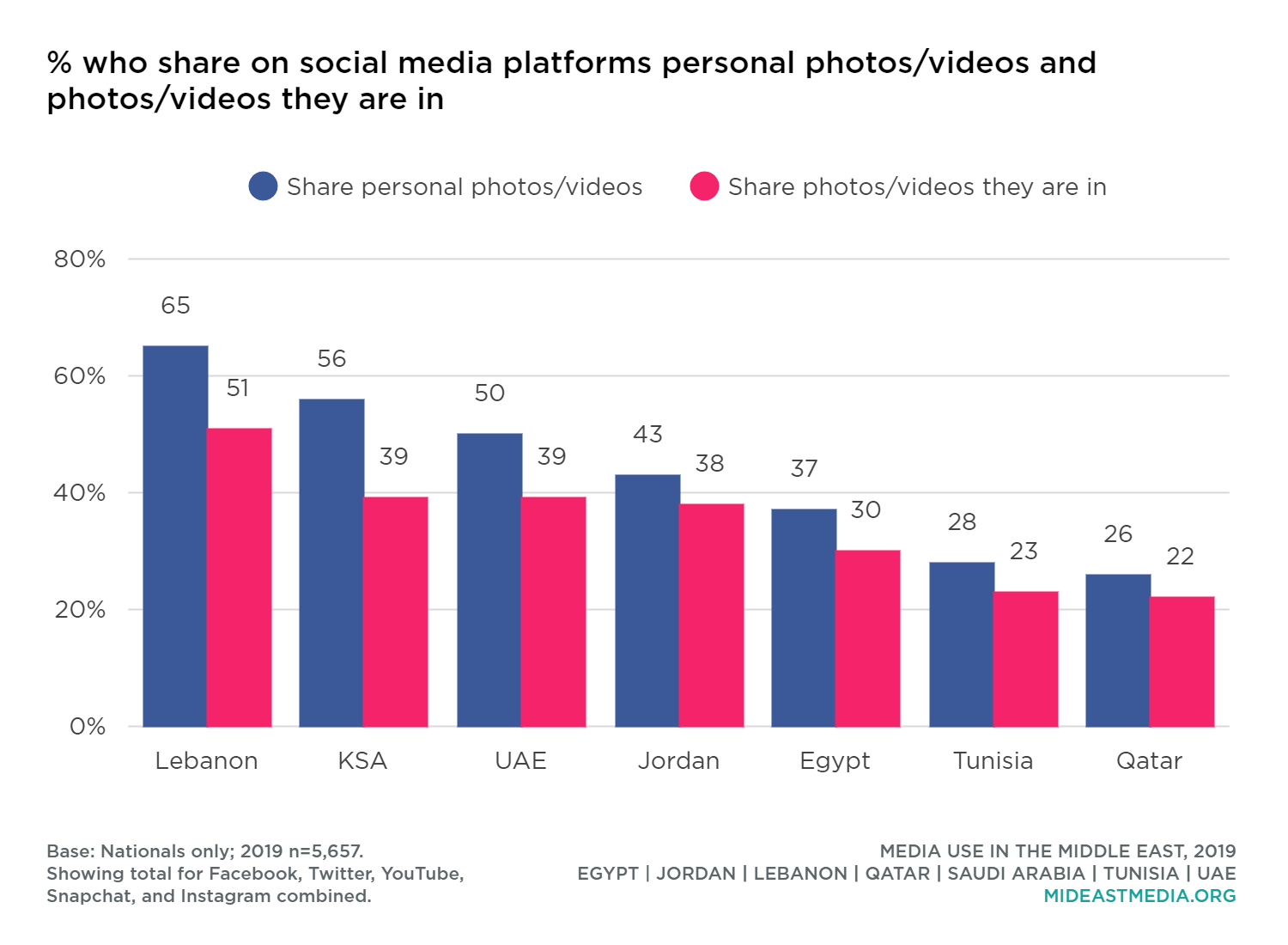
These data counter a common gender stereotype that women are less likely than men to share photos or videos of themselves online. While perhaps true in Jordan, not only are men and women in Lebanon, KSA, and Egypt equally likely to share photos or videos they are in, but women are more likely than men in Tunisia, Qatar, and the UAE to share images of themselves on social media.
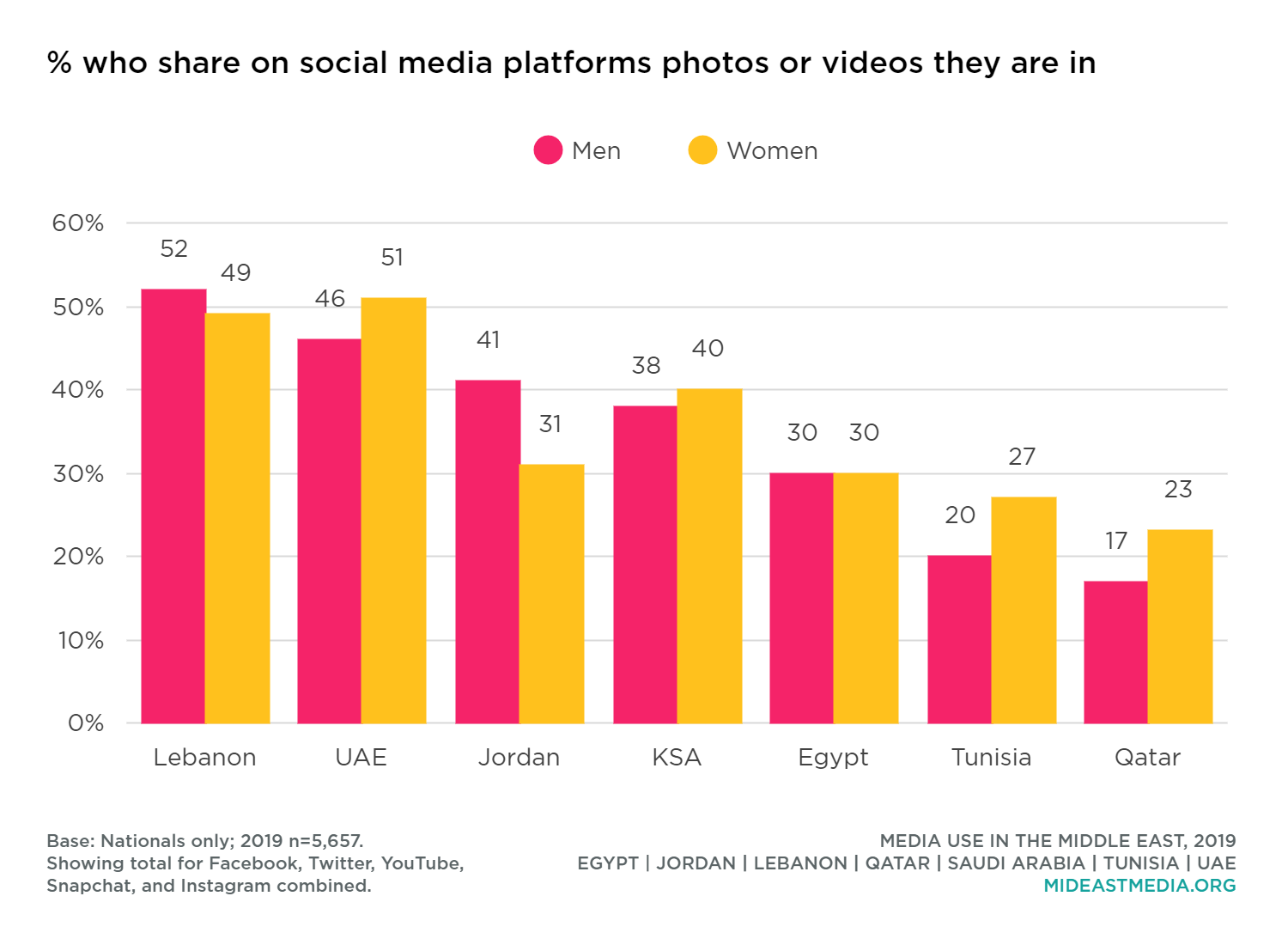
On Facebook, the youngest users (18-24) are less likely than the oldest users (45+) to get or share news (getting news: 61% 18-24 year-olds vs. 74% 45+ year-olds; sharing news: 47% 18-24 year-olds vs. 54% 45+ year-olds). On Twitter, the youngest users are more likely to share personal photos or videos including ones featuring themselves (personal photos/videos: 33% 18-24 year-olds vs. 14% 45+ year-olds; photos/videos they are in: 18% 18-24 year-olds vs. 10% 45+ year-olds).
Instagram is more popular among younger respondents, and younger Instagram users are also more likely than their older counterparts to get entertainment content, share personal content, and to keep up with social media influencers on the platform (get entertainment: 50% 18-24 year-olds vs. 37% 45+ year-olds; share entertainment: 43% 18-24 year-olds vs. 34% 45+ year-olds; share personal photos or videos: 53% 18-24 year-olds vs. 36% 45+ year-olds; view posts/stories from social media influencers: 34% 18-24 year-olds vs. 22% 45+ year-olds).
Arab nationals estimate they direct message single individuals twice as much as with groups. This differs from an almost 50-50 split in 2017 but is consistent with the pattern observed in the 2015 edition of this study.
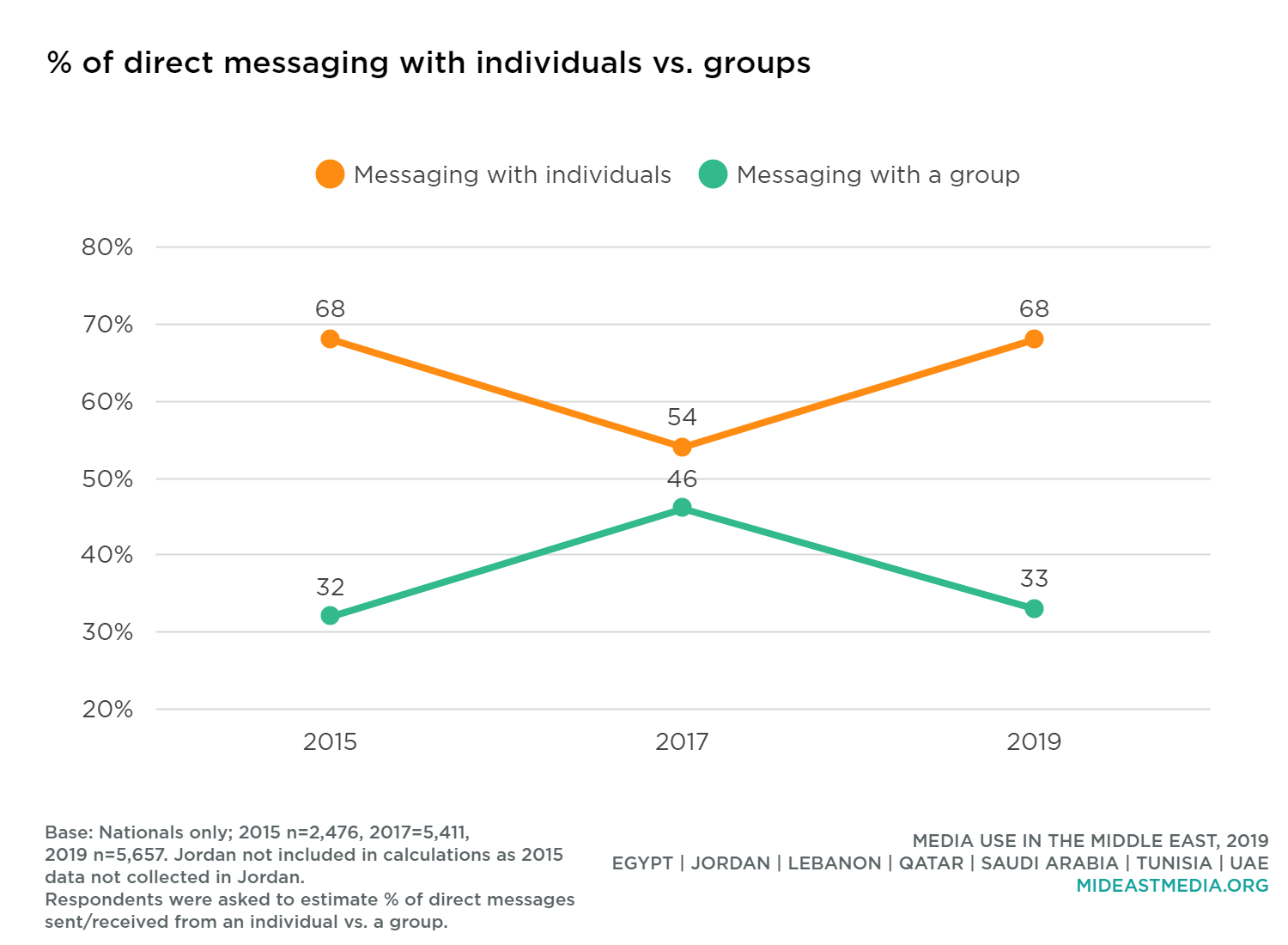
Still, group messaging is common, used by nine in 10 direct-messaging users. Group messaging with coworkers and with groups around shared hobbies are common, especially in the UAE, Qatar, Egypt, Saudi Arabia, and Tunisia. Messaging with community service and volunteer groups is highest in the Arab Gulf countries surveyed. Fewer direct messagers belong to groups promoted by news organizations or companies.
